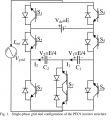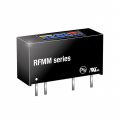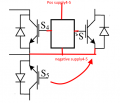Hello all,
I am trying to build a hardware setup for a PEC9 inverter. Since it has more switches and a different configuration than a regular half/full bridge (meaning no high and low side), I didn't know how to connect the gate driver's power side pins (VDD/VSS) since usually in a half-bridge topology the source of the high side switch connects to the drain of the lower side switch and the VEE of the upper gate channel (like in the attached image) and also the VSS of the bottom gate channel is connected to the lower side switch source.
How can I connect the VSS of both gate driver channels to the MOSFETs in the PEC9 topology? Or can I leave them unconnected to the MOSFETs as they are used to power the gate driver's power side?
I will be using 4 dual-channel gate drivers to drive all the MOSFETs or switch to single-channel ones but will still use an isolated bipolar bias supply for each gate driver.


Regards,
I am trying to build a hardware setup for a PEC9 inverter. Since it has more switches and a different configuration than a regular half/full bridge (meaning no high and low side), I didn't know how to connect the gate driver's power side pins (VDD/VSS) since usually in a half-bridge topology the source of the high side switch connects to the drain of the lower side switch and the VEE of the upper gate channel (like in the attached image) and also the VSS of the bottom gate channel is connected to the lower side switch source.
How can I connect the VSS of both gate driver channels to the MOSFETs in the PEC9 topology? Or can I leave them unconnected to the MOSFETs as they are used to power the gate driver's power side?
I will be using 4 dual-channel gate drivers to drive all the MOSFETs or switch to single-channel ones but will still use an isolated bipolar bias supply for each gate driver.


Regards,
Attachments
-
53.6 KB Views: 1










